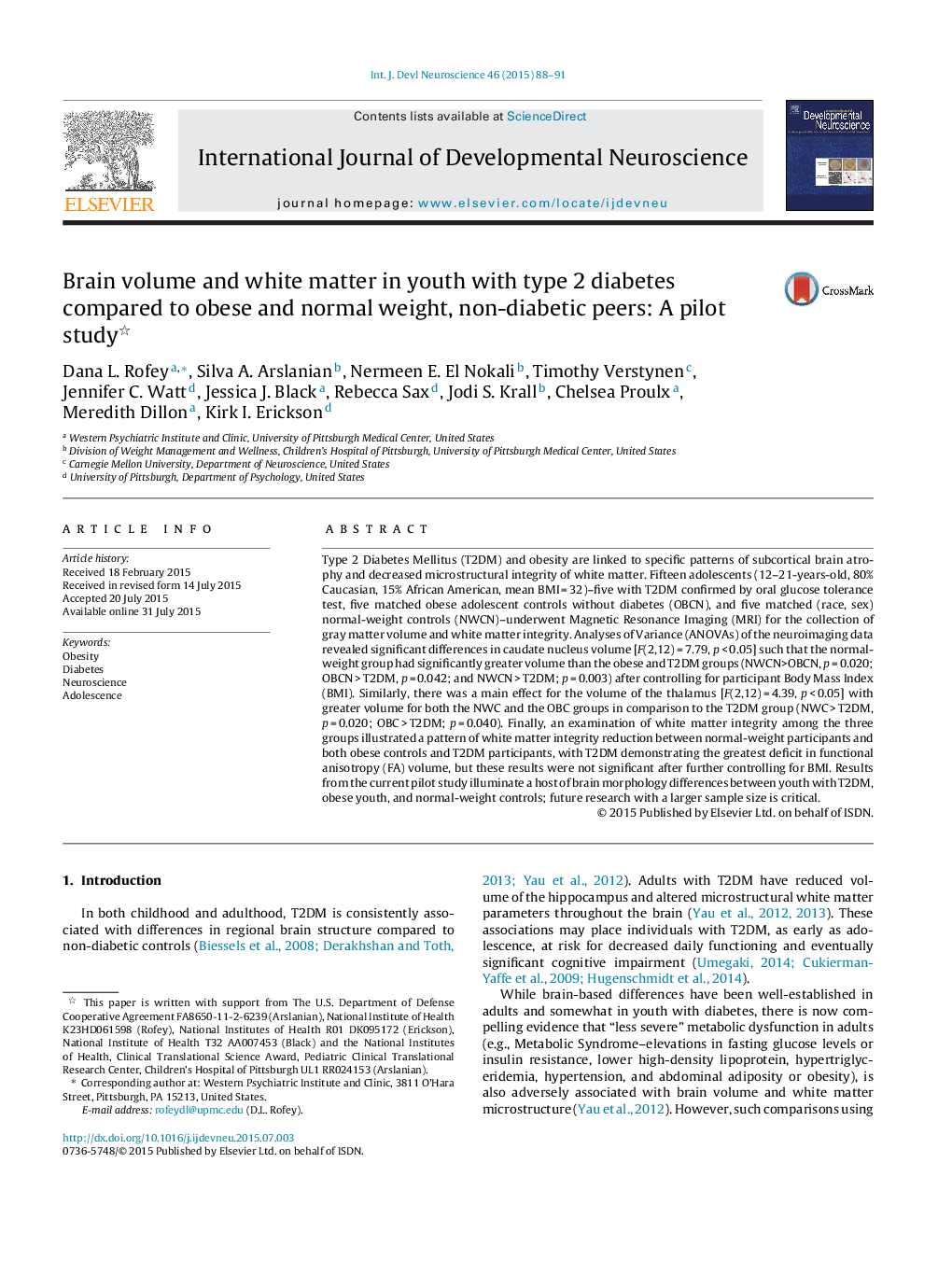| Article ID | Journal | Published Year | Pages | File Type |
|---|---|---|---|---|
| 2785695 | International Journal of Developmental Neuroscience | 2015 | 4 Pages |
•Type 2 Diabetes Mellitus and obesity are linked to specific patterns of subcortical brain atrophy and decreased microstructural integrity of white matter.•Brain morphology data for adolescents with varying rates of insulin resistance is lacking.•Findings from a small pilot study revealed significant differences in caudate nucleus and thalamus volume such that the normal-weight group had significantly greater volume than the obese group, and the obese group had significant greater volume than the T2DM group.•White matter integrity differences measured in functional anisotropy between the three groups also illustrated a pattern of white matter integrity reduction between normal-weight participants and both obese controls and T2DM participants, with T2DM demonstrating the greatest deficit.•The translation of these structural changes to alterations in brain function is crucial, and future research should investigate whether or not the observed changes are reversible and what approaches are most successful during adolescence.
Type 2 Diabetes Mellitus (T2DM) and obesity are linked to specific patterns of subcortical brain atrophy and decreased microstructural integrity of white matter. Fifteen adolescents (12–21-years-old, 80% Caucasian, 15% African American, mean BMI = 32)–five with T2DM confirmed by oral glucose tolerance test, five matched obese adolescent controls without diabetes (OBCN), and five matched (race, sex) normal-weight controls (NWCN)–underwent Magnetic Resonance Imaging (MRI) for the collection of gray matter volume and white matter integrity. Analyses of Variance (ANOVAs) of the neuroimaging data revealed significant differences in caudate nucleus volume [F(2,12) = 7.79, p < 0.05] such that the normal-weight group had significantly greater volume than the obese and T2DM groups (NWCN>OBCN, p = 0.020; OBCN > T2DM, p = 0.042; and NWCN > T2DM; p = 0.003) after controlling for participant Body Mass Index (BMI). Similarly, there was a main effect for the volume of the thalamus [F(2,12) = 4.39, p < 0.05] with greater volume for both the NWC and the OBC groups in comparison to the T2DM group (NWC > T2DM, p = 0.020; OBC > T2DM; p = 0.040). Finally, an examination of white matter integrity among the three groups illustrated a pattern of white matter integrity reduction between normal-weight participants and both obese controls and T2DM participants, with T2DM demonstrating the greatest deficit in functional anisotropy (FA) volume, but these results were not significant after further controlling for BMI. Results from the current pilot study illuminate a host of brain morphology differences between youth with T2DM, obese youth, and normal-weight controls; future research with a larger sample size is critical.
